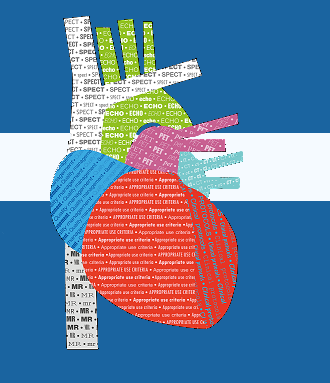The conference will follow up on the recent developments in the entire spectrum of activities related to medical imaging as applied to CVDs. It will have the following objectives:
- To evaluate the current status of medical imaging, including SPECT, PET, echocardiography, CT and MRI, in the management of CVDs;
- To reflect on challenges faced in developing countries;
- To deliver supporting ‘know-how’ via continuing medical education programmes in the field, including information on the relative merits and limitations of each imaging modality;
- To improve the performance of clinical practice through ‘read with the experts’ sessions and workshops;
- To interact with the user groups (nuclear medicine physicians, radiologists, cardiologists, technologists, radiographers, radiopharmacists, radiochemists, medical physicists and other practitioners and scientists working in all aspects of CVD management) and provide them with state-of-the-art information on this field;
- To exchange information on current advances in the field among leading clinical scientists from developed and developing countries; and
- To identify future challenges and trends, as well as the role of the IAEA and other international organizations in addressing these.
The IAEA invites participants to provide high quality contributions on all aspects of medical imaging as applied to the management of CVDs. Both academic and practice based papers under the umbrella of the following topics are welcome:
- Member States experience with nuclear cardiology (SPECT, PET)
- Member States experience with other imaging modalities in cardiology (MRI, CT, echocardiography)
- Use of hybrid diagnostic imaging in cardiology
- Setting up a nuclear medicine and/or diagnostic imaging facility
- Radiopharmaceutical production using cyclotrons and radionuclide generators - including good manufacturing practices and quality assurance aspects - with spescial reference to imaging agents for CVDs
- Issues of medical physics, instrumentation and image processing and analysis
- Quality management, quality control, quality assurance and audits in nuclear medicine and/or diagnostic imaging
- Radiation protection for personnel and dose reduction for patients
- Ethics, leadership and education in nuclear medicine and/or diagnostic imaging
Target audience:
This conference will give an opportunity to review the exciting latest developments in the field of integrated medical imaging as applied to CVDs. The target audience comprises:
- Nuclear medicine physicians
- Radiologists
- Cardiologists
- Radiochemists and radiopharmacists
- Medical physicists
- Technologists and radiographers
- Other practitioners and scientists working in all aspects of medical imaging
-
Member States experience with nuclear cardiology (SPECT, PET)
-
Member States experience with other imaging modalities in cardiology (MRI, CT, echocardiography)
-
Use of hybrid diagnostic imaging in cardiology
-
Setting up a nuclear medicine and/or diagnostic imaging facility
-
Radiopharmaceutical production using cyclotrons and radionuclide generators - including good manufacturing practices and quality assurance aspects - with special reference to imaging agents for CVDs
-
Issues of medical physics, instrumentation and image processing and analysis
-
Quality management, quality control, quality assurance and audits in nuclear medicine and/or diagnostic imaging
-
Ethics, leadership and education in nuclear medicine and/or diagnostic imaging
-
Radiation protection for personnel and dose reduction for patients

